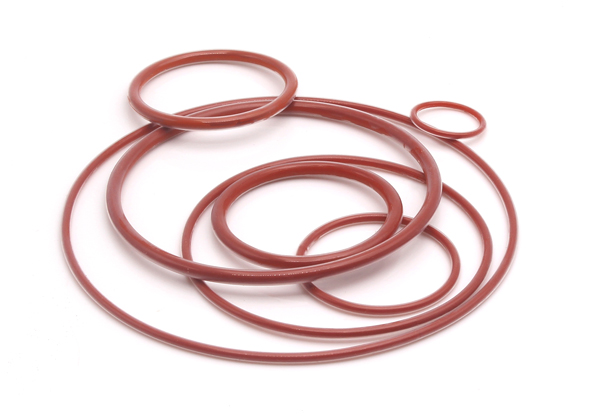Have questions before you get started?
Our team is here to provide the answers and support you need.
FEP-encapsulated O-rings have a core of elastomer that is completely covered with a seamless sheath of FEP fluoropolymer. The elastomeric core is normally either fluorocarbon (FKM) or silicone (VMQ).
FEP (Fluorinated Ethylene Propylene) O-rings are a type of elastomeric sealing component made from FEP material, which is a fluoropolymer. FEP O-rings are known for their excellent chemical resistance, wide temperature range, and low friction properties. They are commonly used in applications where resistance to aggressive chemicals and high temperatures is required. While FEP O-rings generally refer to O-rings made from FEP material, it’s worth noting that there are variations based on different design aspects.
Here are a few types of FEP O-rings based on their characteristics:
FEP-encapsulated Silicone O-rings: These O-rings have a silicone core material that is fully encapsulated with a layer of FEP material. This design offers the chemical resistance of FEP with the elasticity and low compression set characteristics of silicone. FEP-encapsulated silicone O-rings are suitable for applications where excellent chemical resistance and high-temperature capabilities are needed.
FEP-encapsulated Viton® O-rings: Similar to FEP-encapsulated silicone O-rings, these O-rings have a Viton® core material that is fully encapsulated with FEP material. The combination of FEP and Viton® provides enhanced chemical resistance and high-temperature capabilities. These O-rings are commonly used in applications where resistance to aggressive chemicals and high temperatures is critical.


| Type | Characteristics | Temp. range | Hardness |
| FEP encap w/ FKM core | Standard solution. Low comp set, | -20 C to +205 C | 90 to 65 shore A |
| FEP encap w/ silicone core | Better low temp behavior than FKM | -60 C to +205 C | 85 to 90 shore A |
| FEP encap w/ silicone hollow core | Low contact pressure. Used in sensitive equip. Such as glass | -60 C to +205 C | 75 to 85 shore A |
Properties of FEP materials (units based on ASTM standards):
| Property | ASTM unit | Value |
| Specific gravity | D792 | 2.15 |
| Elongation % | D638 | 250~330 |
| Tensile Strength (psi) | D638 | 2800~5000 |
| Flexural strength (psi) | D790 | No break |
| Compressive strength | D695 | 2200 |
| Young’s modulus (psi) | D638 | 50000 |
| Coefficient of friction | On steel | 0.05 |
| Abrasive resistance | Taber | 14~20 |
| Property | ASTM unit | Value |
| Melting pt | C | 260 |
| Max. service temp. | C | 200 |
| Linear coefficient of thermal expansion | D696 | 8.3~10.5 |
| Heat of fusion | BTU/LB | 11 |
| Heat of combustion | BTU/LB | 2200 |
| Low temp embrittlement | C | -268 |
Our team is here to provide the answers and support you need.

We provide engineered solutions to various engineering industries for their demanding applications.
+91-98205 16718
+91-99876 97270
unitedsealing@gmail.com
sales2@unitedsealing.com
Jogeshwari West, Mumbai, Maharashtra, INDIA
Sign up our newsletter to get update information, news and free insight.